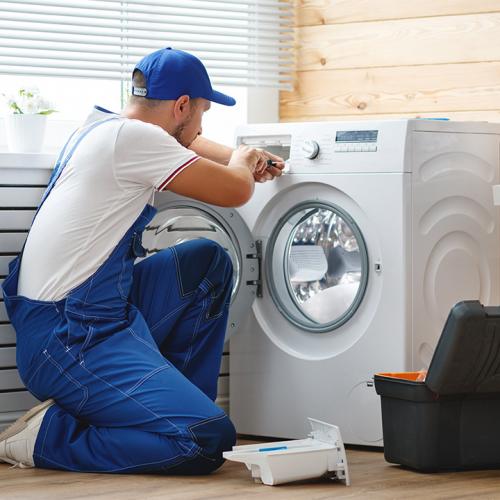How to Repair a Washing Machine: Professional Tips for Troubleshooting

Encountering issues with your washing machine can disrupt your daily routine, but before feeling overwhelmed, there are steps you can take to troubleshoot and possibly resolve the problem on your own. In this comprehensive guide, we'll offer expert tips for troubleshooting washing machine repairs, including advice for LG washer repair, as well as suggestions for finding top-notch appliance repair services nearby.
Begin with Basic Checks:
Commence your troubleshooting journey by performing simple checks to rule out any obvious issues. Check that the washing machine is properly plugged in and that the power cord is undamaged. Also, inspect the circuit breaker to confirm it hasn't tripped. Take a closer look at the water supply hoses, inlet valve, and drain hose for any visible signs of damage or blockages.
Identify the Issue:
Pay attention to any error codes displayed by the washing machine or any specific symptoms it's displaying. This information will aid in pinpointing the underlying problem more accurately. Common issues include drainage problems, spin cycle issues, water leaks, and electrical faults.
Examine the Water Inlet Valve:
If your washing machine struggles with water filling or does so at a sluggish pace, the water inlet valve might be to blame. Disconnect the hoses and inspect the valve for debris or mineral buildup. Clean it thoroughly, and if the problem persists, consider replacing the water inlet valve to ensure proper water flow.
Inspect the Drainage System:
Poor drainage often stems from clogged drain pumps, hoses, or filters. Check these components for blockages and clear any debris. Verify that the drain pump operates correctly, and if not, contemplate replacing it to enhance drainage.
Test the Door Lock Mechanism:
A malfunctioning door lock mechanism can prevent the washing machine from starting or completing a cycle. Assess the door latch and strike for any signs of wear or damage, and replace if necessary to ensure proper engagement.
Address Spin Cycle Concerns:
An ineffectual or unevenly spinning drum may indicate issues with the drive belt, motor coupling, or suspension rods. Replace any worn-out components to restore optimal balance and functionality.
Verify Electrical Connections:
Loose or damaged electrical connections can contribute to various washing machine problems. Scrutinize the power cord, control board, and wiring harness for any signs of damage or loose connections. Tighten connections and replace damaged components as needed.
Seek Professional Assistance:
If DIY troubleshooting proves unsuccessful or if the problem requires specialized expertise, it's prudent to seek professional help. Look for reputable appliance repair services specializing in washing machine repairs, including LG washer repair. Consider factors like experience, certifications, and customer feedback when choosing a repair provider.
Conclusion:
While a malfunctioning washing machine can be a source of frustration, many issues can be identified and potentially resolved through systematic troubleshooting. By following these expert tips, you can effectively troubleshoot washing machine repairs, including LG washer repair. However, should the problem persist or necessitate professional expertise, don't hesitate to enlist the assistance of qualified appliance repair professionals. With the right approach, you can swiftly address the issue and restore your washing machine's functionality, ensuring uninterrupted convenience in your daily routine.
Advertise on APSense
This advertising space is available.
Post Your Ad Here
Post Your Ad Here
Comments